Home > The castle complex > Cēsis castle manor house > History of the manor house
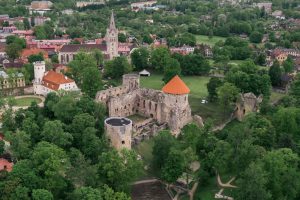 Cēsis castle manor house, together with the historical centre of the castle-manor and the medieval castle ruins of Livonian Order form one of the most important and romantic attractions in Vidzeme region and Eastern Baltic. The manor house is one of the few which were used as a residence in Latvia in 18th-century, and which has been built within a medieval fortification system. Its history is nearly five centuries old.
Cēsis castle manor house, together with the historical centre of the castle-manor and the medieval castle ruins of Livonian Order form one of the most important and romantic attractions in Vidzeme region and Eastern Baltic. The manor house is one of the few which were used as a residence in Latvia in 18th-century, and which has been built within a medieval fortification system. Its history is nearly five centuries old.
View of the manor house and the ruins around year 1830.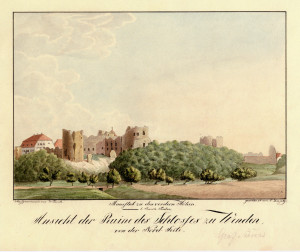
Drawing from Pauluci album.
The exact year of construction of the manor house is not known. It was built around the year 1761 when the manor belonged to the Von Wolf family. In 1777 the property was bought for 96,000 thalers from Baron Karl Adam von Wolf by Major and later Count Karl Eberhard von Sievers (Sievers, 1745 to 1821). Count Sievers family lived in the manor for five generations until the agrarian reform of Latvian Republic in 1920. During this time, manor management was developed and the Castle`s historical complex was created which is still visible nowadays.
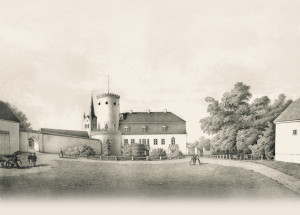 View to the manor house around year 1856. Drawing by Cēsis Castle owner, Count Emanuel von Sievers.
View to the manor house around year 1856. Drawing by Cēsis Castle owner, Count Emanuel von Sievers.
All major reconstruction in the manor house took place between 1820-1830 and 1840-1850, when the Castle was owned by Count Carl Gustaf von Sievers (Sievers, 1772 to 1856). At the time the massive medieval tower was elevated by two smaller floors, smaller in terms of diameter and the main Baroque style volume was supplemented with balconies and columns in the main facades.
Manor house’s Lademaher tower is decorated with sharp-bow arcades and the openings are considered to be one of the first examples of neo-Gothic in Latvian manor architecture. By contrast, the interior is dominated by the early Classicism and Biedermeier style characteristics of interior decoration of the first half of the 19th century.
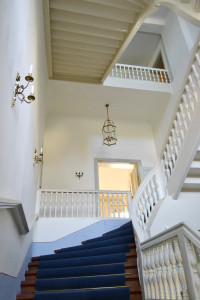 Counts Sievers family lived in the manor house until the World War I. In 1919, after the battles of Cēsis, during Latvian Freedom fights, the building was occupied by Northern Latvia Civil administration. During these events, many of manor’s interior accessories were destroyed, including the large library of Count Sievers. In 1922 the building was taken over by the Latvian army and until 1940 it served as the headquarters of the Daugavpils 8th Infantry Regiment of the Latvian army and officers’ club. After World War II the building was turned into an apartment building, Cēsis History and Art Museum was established in the New Castle in 1949.
Counts Sievers family lived in the manor house until the World War I. In 1919, after the battles of Cēsis, during Latvian Freedom fights, the building was occupied by Northern Latvia Civil administration. During these events, many of manor’s interior accessories were destroyed, including the large library of Count Sievers. In 1922 the building was taken over by the Latvian army and until 1940 it served as the headquarters of the Daugavpils 8th Infantry Regiment of the Latvian army and officers’ club. After World War II the building was turned into an apartment building, Cēsis History and Art Museum was established in the New Castle in 1949.
After the restoration of the Cēsis manor house between 2007 – 2012 the former residence of Count Sievers family regained its historical appearance. Within the building an exhibition displays the history of Cēsis which is a part and symbol of Latvian culture.